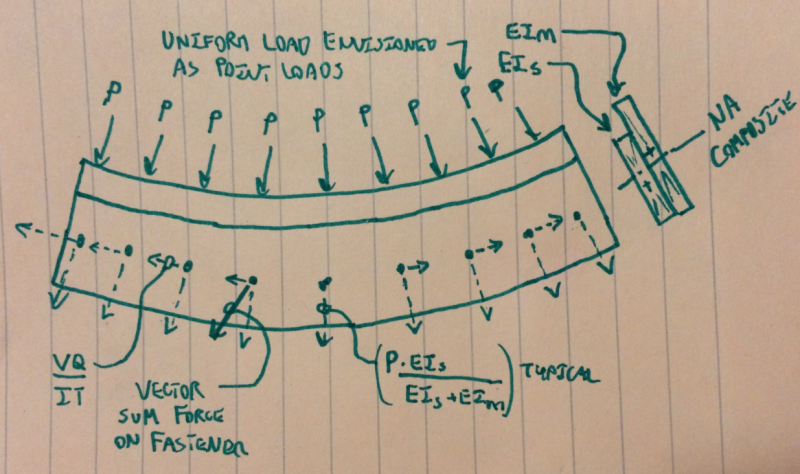RM87
Structural
- Feb 19, 2013
- 52
Hello folks,
I've been working on some calcs and I was hoping to get your take on the following issue:
I have an existing 2X12 douglas-fir wood joists supporting the roof.
My clients want to convert the use of the roof, and want to strengthen the joists to accommodate the larger live and dead loads. Existing roofing is to remain.
I've been thinking to sister a smaller 1.75X9.5 LVL 2.0E joist to the 2X12 would be a good alternative - flush at the bottom face of the joists.
How would you calculate this system? How would you design for the shear flow into the lag screws?
- Rod
I've been working on some calcs and I was hoping to get your take on the following issue:
I have an existing 2X12 douglas-fir wood joists supporting the roof.
My clients want to convert the use of the roof, and want to strengthen the joists to accommodate the larger live and dead loads. Existing roofing is to remain.
I've been thinking to sister a smaller 1.75X9.5 LVL 2.0E joist to the 2X12 would be a good alternative - flush at the bottom face of the joists.
How would you calculate this system? How would you design for the shear flow into the lag screws?
- Rod

![[idea] [idea] [idea]](/data/assets/smilies/idea.gif)
![[r2d2] [r2d2] [r2d2]](/data/assets/smilies/r2d2.gif)

